Whether you're a first-time dog owner or an experienced pet parent, this guide is designed to answer all your grooming questions and concerns. From basic brushing techniques to more advanced grooming routines, we've got you covered, ensuring your furry friend looks and feels their best.
This guide not only simplifies the grooming process but also strengthens the bond between you and your dog, turning grooming sessions into fun, bonding moments. So grab your tools and let's start this journey toward a healthier, happier, and well-groomed pup!
Why Grooming Your Dog Matters
Grooming your dog regularly is essential for their overall health and happiness. Here are six key reasons why it’s important:
Skin and Coat Health
Regular grooming, such as brushing and bathing, helps remove dirt, dead hair, and dander from your dog’s coat. It also spreads natural oils across the skin, keeping the coat shiny and healthy. For long-haired dogs, regular grooming prevents painful mats and tangles.
Detecting Health Issues Early
Grooming sessions give you a chance to check your dog’s body for any lumps, bumps, or skin problems. Catching these early can lead to faster treatment and better outcomes.
Parasite Detection and Control
During grooming, you can spot fleas and ticks, which can cause discomfort and even serious health issues if left untreated.
Nail Trimming
Overgrown nails can be painful and affect your dog’s posture and mobility. Regular trimming keeps them comfortable and healthy.
Ears Cleaning
Cleaning your dog's ears regularly is especially important for breeds prone to infections. It helps prevent wax buildup and irritation.
Eye Care
Grooming around the eyes, especially in certain breeds, helps prevent tear stains and eye discharge, keeping the area clean and healthy.
Improved Hygiene and Comfort
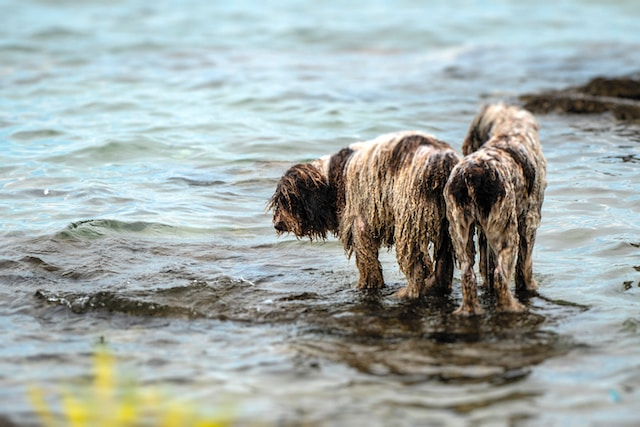
Keeping your dog clean reduces bad smells and makes them more pleasant to be around. It also ensures they feel comfortable without the discomfort of mats or parasites.
Bonding Time
Grooming is a great way to spend quality time with your dog. It builds trust and creates a stronger connection between you both.
Essential At-Home Grooming Tools and Supplies
To groom your dog at home effectively, you need the right tools. Each tool has a specific purpose in maintaining your dog's coat, nails, and overall hygiene. Here are some must-have items:
Brushes and Combs
- Slicker Brush: Great for removing mats and tangles, especially for long-haired dogs.
- Bristle Brush: Ideal for short-haired dogs to remove loose fur and stimulate the skin.
- Pin Brush: Perfect for medium to long-haired dogs.
- De-shedding Tool: Helps reduce shedding in dogs with thick undercoats.
- Flea Comb: Used to detect and remove fleas and eggs.
Clippers and Scissors
- Electric Clippers: Useful for trimming thick or long coats.
- Scissors: For precise cuts around the face, paws, and ears.
- Thinning Shears: Help thin out thick fur without changing the length.
Nail Clippers or Grinder
- Clippers: For trimming nails to a safe length.
- Nail Grinder: A gentler option for nervous dogs.
Shampoo and Conditioner
- Dog Shampoo: Choose one suitable for your dog's skin type. Avoid human shampoo, which can be harmful.
- Dog Conditioner: Helps detangle and soften the coat, especially for long-haired breeds.
Ear Cleaning Supplies
- Ear Cleaner: Use a vet-approved solution.
- Cotton Balls: For gently cleaning inside the ears.
Dental Care Supplies
- Dog Toothpaste: Never use human toothpaste, as it can be toxic.
- Toothbrush: Designed specifically for dogs.
Grooming Wipes or Spray
- Great for quick clean-ups and keeping your dog fresh between baths.
Towels and Hair Dryer
- Absorbent Towels: For drying after a bath.
- Hair Dryer: Use on low heat for dogs who tolerate it.
Dog Grooming Process: Step-by-Step Guide
Grooming your dog can be a fun and rewarding experience when done properly. Here’s a detailed guide to help you through the process:
Brushing Your Dog
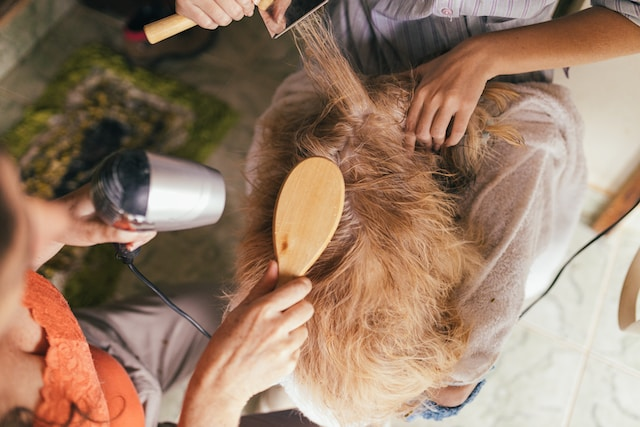
Brushing your dog’s fur is essential for removing dirt, dander, and loose hair. It also helps prevent matting and keeps the coat shiny and healthy. Start by choosing the right brush for your dog’s fur type:
- Short Coats: Use a bristle brush once a week.
- Medium and Long Coats: Use a slicker brush to remove mats, followed by a pin brush.
- Curly or Wooly Coats: Brush daily to prevent severe matting.
- Double Coats: Use an undercoat rake during shedding season, then a regular brush.
Start brushing from the head and work your way down, always in the direction of hair growth. Be gentle and take your time to avoid causing discomfort.
Bathing Your Dog

Bathing your dog is an important part of their grooming routine. It removes dirt, oil, and odors while giving you a chance to check for skin issues. Here’s how to do it:
- Preparation: Gather all supplies and use a non-slip mat in the tub.
- Water Temperature: Use lukewarm water.
- Washing: Apply a dog-specific shampoo and massage gently. Avoid the eyes, mouth, and ears.
- Rinsing: Rinse thoroughly to avoid residue.
- Conditioner (optional): Apply and rinse again to keep the coat soft.
- Drying: Pat dry with a towel and use a hair dryer on a cool setting if your dog is comfortable.
Nail Care
Trimming your dog's nails is crucial for their comfort and mobility. Follow these steps:
- Use sharp, high-quality dog clippers.
- Hold your dog’s paw firmly but gently.
- Clip the tip of the nail, avoiding the quick (the pink part).
- Trim small sections at a time.
- If you cut the quick, apply styptic powder to stop the bleeding.
- Smooth rough edges with a nail file.
You can also use a nail grinder for a more gradual approach.
Ear Cleaning
Regular ear cleaning helps prevent infections and catches issues early. Here’s how to do it:
- Use a vet-approved ear cleaner like Petique Odor Eliminating Ear Cleaner.
- Apply a few drops into the ear canal and massage the base.
- Use cotton balls to wipe away debris.
- Repeat for the other ear.
Clean your dog's ears every few weeks or as recommended by your vet, especially if they’re prone to ear problems.
Hair Trimming

Trimming your dog’s hair at home keeps their coat neat and reduces matting. Follow these steps:
- Use sharp, dog-specific scissors or clippers.
- Trim in the direction of hair growth. Use small snips for precision.
- Give your dog breaks to stay calm and comfortable.
- Keep the skin taut to avoid nicks.
- Finish with a brush to remove cut hairs.
- Offer treats and praise to make it a positive experience.
Remember, patience is key. With practice, you’ll get better at it.
How to Handle Common Grooming Challenges
Grooming can sometimes be tricky, especially if your dog is anxious or uncooperative. Here are some tips to handle common challenges:
- Fear of Water: Introduce your dog to the bath gradually and use treats to create a positive association.
- Matted Fur: Prevent mats with regular brushing. Use detangling sprays and be gentle when removing tangles.
- Restless Dogs: Exercise before grooming and keep sessions short and positive.
- Post-Grooming Zoomies: Allow your dog to play or walk after grooming to burn off energy.
Home Grooming Tips & Tricks
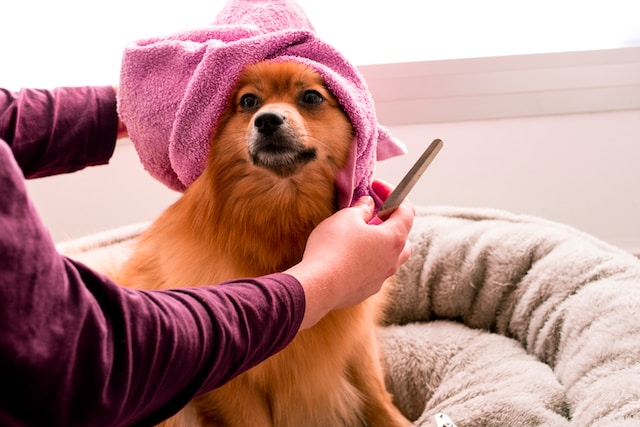
Grooming your dog at home can be a joyful experience that strengthens your bond. Here are some tips to make it easier and more enjoyable:
- Start Young: Introduce grooming early to build good habits.
- Brush Regularly: Prevent mats and keep the coat healthy.
- Use the Right Tools: Choose brushes and combs based on your dog’s coat type.
- Care for Ears and Eyes: Clean ears gently and trim eye area carefully.
- Positive Reinforcement: Reward your dog with treats and praise during grooming.
- Be Patient: Observe your dog’s reactions and adjust accordingly.
Grooming Special Needs Dogs
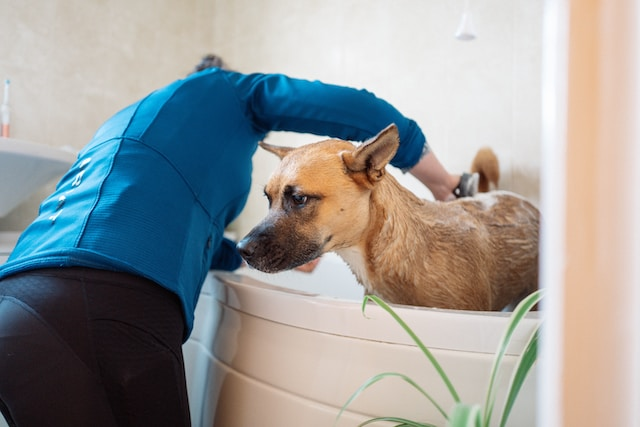
Grooming dogs with special needs requires extra care and attention. Here are some tips to ensure their comfort and safety:
- Be Gentle and Patient: Allow your dog time to adjust and offer breaks as needed.
- Adapt to Their Comfort Level: Adjust your technique based on your dog’s reactions.
- Create a Calm Environment: Choose a quiet space for grooming to reduce anxiety.
- Use Appropriate Tools: Select tools that suit your dog’s sensitivity.
- Be Careful with Nail Trimming: Use a nail grinder if your dog is anxious about clippers.
- Consult Your Veterinarian: Get advice tailored to your dog’s specific needs.
FAQs
How often should I groom and bathe my dog at home?
The frequency depends on your dog’s breed, coat type, and lifestyle. As a general rule, dogs should be groomed at least once a month.
What's the best way to brush my dog's teeth?
Use a soft-bristled dog toothbrush and dog-specific toothpaste. Start slowly and reward your dog with treats and praise.
Can I use human shampoo on my dog?
No, human shampoo can irritate your dog’s skin. Always use a shampoo made for dogs.
How can I prevent my dog from shedding?
Brush regularly, feed a balanced diet, and maintain good health. These steps can help manage shedding.
Should I groom my dog myself or take them to a professional?
It depends on your dog’s needs and your confidence. Some dogs benefit from professional help, especially those with complex grooming requirements.
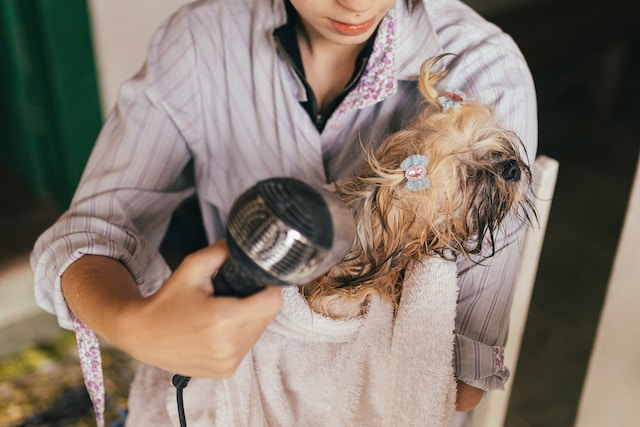
Groom Your Dog at Home Using Puppy Fever Pro's Grooming Products!
Grooming your dog is an important part of being a responsible pet owner. With the right tools from Puppy Fever Pro and the right techniques, you can keep your furry friend looking and feeling great.
Combine our products with these tips and make grooming at home easier and more comfortable for both you and your pet. Explore our full range today!
For more helpful tips and tricks for dog owners, visit our blog.
Full Cassette Motorized Retractable Awning
Full Cassette Motorized Retractable Awning,Motorized Retractable Folding Arm Awnings,Full Cassette Retractable Motorized Awning,Full Cassette Retractable Motorised Awning
Hebei Charlotte Enterprise Co., Ltd. , https://www.hbcharlotteawning.com